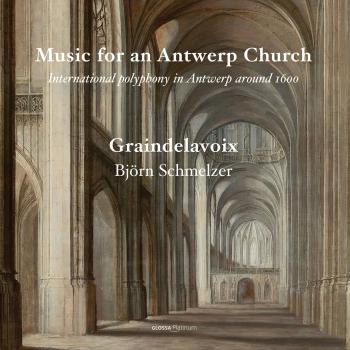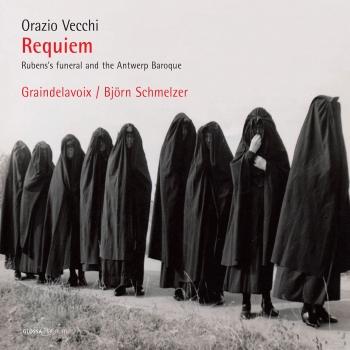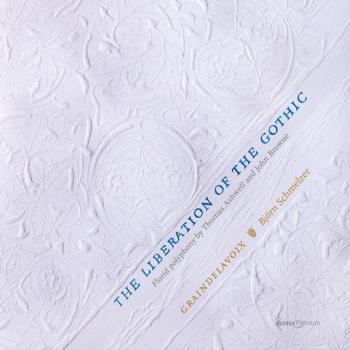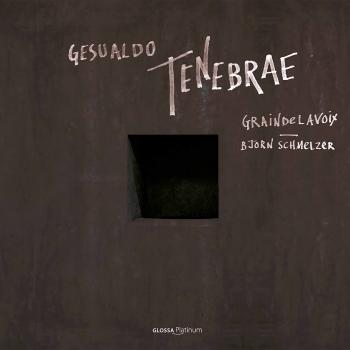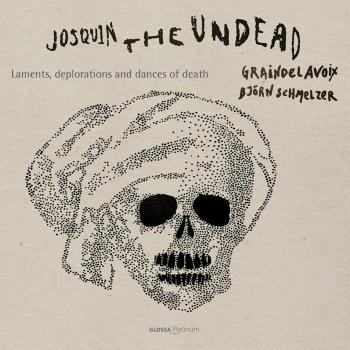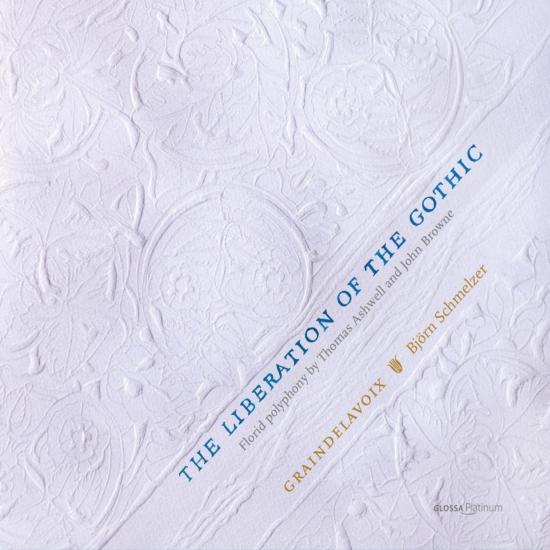
The Liberation of the Gothic Graindelavoix & Björn Schmelzer
Album info
Album-Release:
2018
HRA-Release:
14.09.2018
Label: Glossa
Genre: Classical
Subgenre: Vocal
Artist: Graindelavoix & Björn Schmelzer
Composer: Thomas Ashwell (1483-1513)
Album including Album cover Booklet (PDF)
- John Browne (1948- ):
- 1Salve Regina17:51
- Thomas Ashwell (ca. 1478 - after 1513): Missa Ave Maria:
- 2I. Gloria09:53
- 3II. Credo11:34
- 4III. Sanctus09:56
- 5IV. Agnus Dei10:58
- John Browne 1480-1505):
- 6Stabat Mater19:16
- Anonymous:
- 7Rex Virginum06:55
Info for The Liberation of the Gothic
With The Liberation of the Gothic, Björn Schmelzer and Graindelavoix deliver an imaginative reading of music by two English composers active at the end of the fifteenth century, the towering figure of John Browne and the slightly later and much less well-known Thomas Ashwell (or Ashewell). Björn Schmelzer draws a vivid connection between the florid polyphony of these two composers and the freedom of structure and ornament found in late Gothic architecture, notably that of the fourteenth-century Lady Chapel built as part of the “Ship of the Fens”, Ely Cathedral.
Performing Ashwell’s intricately-woven Missa Ave Maria – a landmark in polyphony – Schmelzer and his Antwerp-based ensemble echo, in the individual freedom accorded to these virtuoso singers, the rich ornamentation of foliage, seemingly in constant motion, decorating the walls of Ely’s Lady Chapel. The singers add their own “coloratura”, an approach which continues to be central to Björn Schmelzer’s interpretation of medieval and Renaissance works, as have been appearing on Glossa for a decade and a half now.
In his booklet essay Schmelzer refers to the British writer and artist John Ruskin describing the “liberation of the Gothic” as also concerning “the workers, who were not submitted to repetitive, mechanical work but invested in continuous and infinite variation.” Acting as surrounding pillars to Ashwell’s Mass on this recording are two of the extended motets, much favoured by early Tudor English polyphonists – and encountered in the famous Eton Choirbook manuscript: John Browne’s Stabat mater and his first setting of the Salve regina.
Graindelavoix
Anne-Kathryn Olsen, soprano
Carine Tinney, soprano
Razek-François Bitar, alto
Tomàs Maxé, alto
Albert Riera, tenor
Andrés Miravete, tenor
Marius Peterson, tenor
Arnout Malfliet, bass
Björn Schmelzer, conductor
Graindelavoix
is much less an early music ensemble and much more an art collective experimenting between the fields of performance and creation, comprising singers and instrumentalists led by Björn Schmelzer. Taking its name from an essay by Roland Barthes (“le grain, c’est le corps dans la voix qui chante, dans la main qui écrit, dans le membre qui exécute...”), where Barthes was looking for what constitutes the gritty essence of a voice, Graindelavoix experiments with what one does with the “grain”, the physical and spiritual reflection of the voice.
Formed in 1999 by Schmelzer and based in Antwerp in Belgium, the collective works with material as diverse as Ockeghem’s polyphony, the plainte, machicotage, Mediterranean practices, late scholastic dynamics and kinematics, the affective body, gesture and image culture... What is preoccupying Graindelavoix in early music is the bond between notation and what eludes it: the higher consciousness and savoir-faire that the performer brings to a piece (ornamentation, improvisation, gestures...). Schmelzer works with singers and instrumentalists who embrace diversity, heterogeneity, ornamentation and improvisation in their music-making. In many ways, an ethno-musicological approach to early music.
Graindelavoix is a “special guest” at the Muziekcentrum De Bijloke in Ghent and has an artistic partnership with the Cultuurcentrum in the further Belgian city of Genk.
In Poissance d’amours Schmelzer – an ethnomusicologist by training – explores the music and writings of mystics, monks and minstrels active in 13th century Brabant for Glossa. This release and the recordings of music composed by Johannes Ockeghem (Caput) and Gilles Binchois (Joye) are allied to performances – in concert and music theatre formats – that are the accumulated fragments of a wider work and research process. Graindelavoix is offering a challenging new insight into the performances of music from the past.
Björn Schmelzer
studied anthropology and musicology but as a multidisciplinary artist he is primarily self-taught. He is the founder and artistic director of graindelavoix, an artist company that starts from folds and faults in ancient repertoires to rehabilitate the fundamental anachronism of practices in time. From this point of view, graindelavoix brings together artists of all disciplines: musical, visual and performative…Over the course of long research stays, Schmelzer studied primarily in the Mediterranean world, in Italy (Sardinia, Sicily), Spain, Portugal and Morocco, specializing in vocal repertoire and performance practice. He studied several medieval vocal traditions in depth, their continuation and survival in later times, ornamentation styles, and the logic of operative knowledge. He combines this work with insights from anthropology, history, human geography and ethnomusicology, resulting in various publications and concert programs. He is regularly requested as a guest conductor and lecturer. Björn Schmelzer has published several essays and articles for literary magazines, specialized magazines, academic publications and exhaustive CD booklets. He is currently writing a book about vocal practices, derived from 10 years of expertise with graindelavoix. With graindelavoix he has received several prizes and awards such as 'Young Musician of the Year' by the Belgian Music Press.
In 2011, Schmelzer became the first "Creative Fellow in Musicology", a collaboration between the Utrecht Early Music Festival and the Centre for Humanities at Utrecht University. Besides his activities as artistic director of graindelavoix, he makes films, both fictional and documentary, often associated with graindelavoix projects. As a playwright and director, he created, among others, Cesena with Anne Teresa de Keersmaeker, Muntagna Nera with Filip Jordens and Jan Van Outryve, Ossuaires with Koen Broos and Wim Scheyltjens and Trabe Dich Thierlein! with Margarida Garcia, Koen Broos and David Hernandez. Most recently, he designed audio-visual and interdisciplinary installations with Koen Broos and Margarida Garcia in The Hospital of Undersized Gestures.











